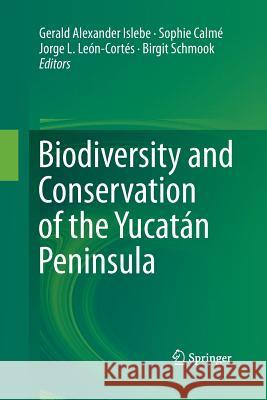Biodiversity and Conservation of the Yucatán Peninsula » książka
topmenu
Biodiversity and Conservation of the Yucatán Peninsula
ISBN-13: 9783319360140 / Angielski / Miękka / 2016 / 401 str.
Kategorie:
Kategorie BISAC:
Wydawca:
Springer
Język:
Angielski
ISBN-13:
9783319360140
Rok wydania:
2016
Wydanie:
Softcover Repri
Ilość stron:
401
Waga:
0.58 kg
Wymiary:
23.39 x 15.6 x 2.16
Oprawa:
Miękka
Wolumenów:
01
Dodatkowe informacje:
Wydanie ilustrowane











